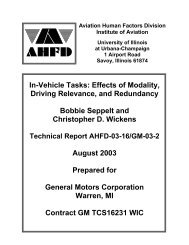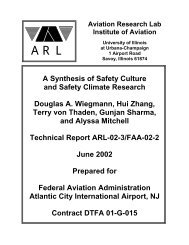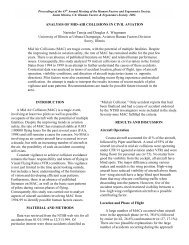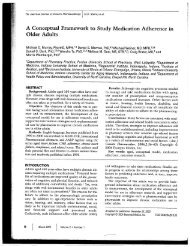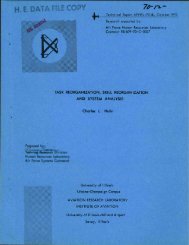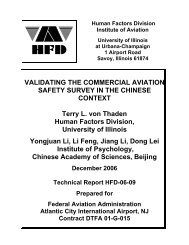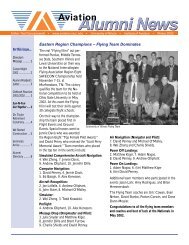Defining and Assessing Safety Culture in High Reliability Systems
Defining and Assessing Safety Culture in High Reliability Systems
Defining and Assessing Safety Culture in High Reliability Systems
You also want an ePaper? Increase the reach of your titles
YUMPU automatically turns print PDFs into web optimized ePapers that Google loves.
Pidgeon, N., & Oleary, M. (1994). Organizational safety culture: Implications for aviation<br />
practice. In N. Johnson, N. McDonald, & R. Fuller (Eds.), Aviation psychology <strong>in</strong> practice<br />
(pp. 21-43). Brookfield, VT: Ashgate.<br />
Two theoretical models of large-scale accidents, Turner’s (1978) disaster <strong>in</strong>cubation model <strong>and</strong><br />
Perrow’s (1984) complexity-coupl<strong>in</strong>g account of failures <strong>in</strong> sociotechnical systems, are<br />
presented to illustrate why many of behavioral causes of disasters should be analyzed us<strong>in</strong>g a<br />
broader perspective that takes <strong>in</strong>to account the social <strong>and</strong> organizational arrangements of<br />
sociotechnical systems. <strong>Safety</strong> culture is def<strong>in</strong>ed as a system of mean<strong>in</strong>g, which consists of a set<br />
of beliefs, norms, attitudes, roles <strong>and</strong> social <strong>and</strong> technical practices with<strong>in</strong> an organization, which<br />
are concerned with m<strong>in</strong>imiz<strong>in</strong>g the exposure of <strong>in</strong>dividuals, both with<strong>in</strong> <strong>and</strong> outside an<br />
organization, to conditions considered to be dangerous.<br />
The elements of a “good” safety culture are elaborated under four pr<strong>in</strong>ciple head<strong>in</strong>gs:<br />
(1) Location of responsibility for safety at strategic management level,<br />
(2) Distributed attitudes of care <strong>and</strong> concern throughout an organization,<br />
(3) Appropriate norms <strong>and</strong> rules for h<strong>and</strong>l<strong>in</strong>g hazards, <strong>and</strong><br />
(4) On-go<strong>in</strong>g reflection upon safety practice.<br />
F<strong>in</strong>ally, the possibility <strong>and</strong> challenges of the application of the concept of safety culture <strong>in</strong><br />
guid<strong>in</strong>g the proactive process of <strong>in</strong>stitutional design for safety are discussed.<br />
Prakasam, R. (1986). Organizational climate: Development of a questionnaire measure.<br />
Psychological Studies, 31(1), 51-55.<br />
Organizational climate is def<strong>in</strong>ed as the shared perception of employees regard<strong>in</strong>g the<br />
organizational procedures, policies, <strong>and</strong> practices. In this study, a 50-item 4-po<strong>in</strong>t selfadm<strong>in</strong>istered<br />
climate questionnaire was developed for banks <strong>and</strong> similar <strong>in</strong>stitutions. 10<br />
dimensions are covered <strong>in</strong> this measure:<br />
(1) Conformity,<br />
(2) Shar<strong>in</strong>g <strong>in</strong> decision mak<strong>in</strong>g,<br />
(3) Supervision: task orientation,<br />
(4) Supervision: people orientation,<br />
(5) Supervision: bureaucratic orientation,<br />
(6) Responsibility,<br />
(7) Non-f<strong>in</strong>ancial reward,<br />
(8) Promotion,<br />
(9) Team sprit,<br />
(10) St<strong>and</strong>ard.<br />
Adm<strong>in</strong>istration of the questionnaire to 48 employees <strong>in</strong> 4 bank branches <strong>and</strong> a retest of 44<br />
subjects resulted <strong>in</strong> favorable item correlation <strong>and</strong> reliability data. Six out of ten climate<br />
dimensions could effectively discrim<strong>in</strong>ate the high <strong>and</strong> low perform<strong>in</strong>g branches.<br />
32




